Fake Rhino Horn - Will fake trade pose a danger to regulated trade?
Counterfeit Rhino horn trade is big business within Africa and Asia of which poses a significant threat to any proposed legal Rhinoceros horn trade, regardless of what the pro trade lobby has suggested within online forums and meetings with governmental environmental agencies.
Within this article we look at just how big such trade is and whether it will actually threaten the proposed lifting of the still banned Rhino horn trade within South Africa.
Pro trade lobbyists believe that by flooding the market with genuine Rhino horn that such counterfeit trade will be diminished and should not pose any real significant threat to legal trade or increase poaching furthermore. Although the counterfeit trade is not really a major issue to any such proposed legal trade, criminals that want to make a quick buck regardless of any such trade being made legal will still continue peddling fake horn regardless of who the legitimate suppliers are. We are after all talking of “money making” here.
Rhino horn smugglers are now making very high quality fake horns, allowing unscrupulous hunters to sell the real horns at a huge mark-up to black market dealers for traditional medicine and status symbols.
The fake horns are made with top quality resins and look so authentic that they are almost impossible to distinguish from the real thing, a report presented July 2012 to members of the Convention on International Trade in Endangered Species (Cites) says. The report, presented to the convention’s standing committee in Geneva, says Cites officials have been alerted to the increasing involvement of “professional hunters in the illegal Rhino horn trade”. Yet hunters deny having any involvement within the trade whatsoever.
“Trophies are exported to hunters after a legal hunt, but once the hunters have received the trophies in their home countries, the original Rhino horns are removed from the trophies and replaced with fake horns.” This is rather interesting as since 2014, March our investigative unit the CICU has yet again viewed a staggering increase in what looks like real horns and fake horns online for sale.
Cites did not specify in which country the fake horns were being made and sold, but details in the report point to the possible involvement of either American or European hunters in the fake horn scam. In 2012, wildlife investigators in the US arrested several American and Vietnamese nationals in a major bust in several cities across the US following the seizure of numerous Rhino horns, some of which were suspected to have originated from legal Rhino hunts in SA and other parts of the continent.
There have also been a series of robberies from museums and private collections across Europe over the past two years in which the horns were stolen from mounted rhino head trophies.
“The fake horns were initially made with a mould and were relatively easy to identify, but recent reports from authorities indicate that fake horns encountered lately are made in high-quality resin with a density even higher than that of a real horn. “This makes visual identification, once fully mounted, extremely difficult.”
But Cites officials have now found a way to smoke out the culprits. “Fake horns can, however, be identified relatively easily by collecting and burning a small quantity of dust from the horn, which will deliver a distinctive smell indicating that it is not Rhinoceros horn.
“In the light of this new trend, it is of extreme importance that Cites parties should have adequate legislation and enforcement controls in place, to prevent horns that are part of legal exported trophies from being used for purposes other than hunting trophies, and to ensure that the trophies remain in possession of their owners.”
Another possible source of the fake horns could be in Vietnam, which has been implicated as the end destination of dozens of SA rhinos shot legally by Vietnamese poachers posing as bona fide trophy hunters. The report notes that Vietnamese authorities had pledged to conduct a stock-taking exercise to check whether SA Rhino trophy horns were still in the possession of Vietnamese hunters.
“It is vital for the authorities in Vietnam to conclude this activity as a matter of urgency and to investigate fully all incidents where trophies are no longer in possession of the hunters. Such follow-up investigations can provide important information on the identity of the driving force behind the trafficking of Rhino horn.”
People who no longer had their horn trophies should be able to tell investigators who the horns had be sold to.
While fake Rhino horn is fraudulent, there are numerous effective, viable and affordable substitutes for Rhino horn in traditional medicine, the use of which has been encouraged by government and traditional medicine authorities, and surveys indicate that most practitioners are adopting them. Consumer attitudes toward rhino horn as a medicine have been little studied (although research is underway in Viet Nam). In Japan, only 17% of nearly 1,200 people surveyed had heard of Rhino horn as a medicine, and just 1% said they had ever taken any.
Trade in counterfeit Rhino horn is not just problematic within Africa, Europe and Vietnam. Indian kingpins and traders have also devised ways in which to produce rather crude fake horn that has fooled buyers into purchasing leaving them out of pocket.
The standard advice to smell a Rhino horn to know if it is real or not has made con artists come up with fake substitutes made of wood and dry bamboo root with a little frog meat rubbed in for the authentic “odour”. In the clandestine world of Rhino horn smuggling, buyers are always in a hurry and usually go by the smell. And horn traders are making the most of it.
The “markets” are now flooded with these wooden horns and few can tell the real from the fake. A source in the forest department revealed the recipe: wood, dry bamboo root modified by using lac. “Meat of frogs and other animals is also rubbed on the fake horn to replicate the smell of a Rhino horn,” the source said.
The Rhino horn — which is in heavy demand in south Asian and middle-east countries — is prized for its supposedly aphrodisiac and unproven medicinal qualities. This alternative market came to light with the recovery of a fake rhino horn from Bokakhat town near Kaziranga National Park January 28th 2012. Two persons, Mrigangshu Kalita and Ajit Bora, were also apprehended from Bokakhat when they were about to strike a deal. Kalita, however, managed to give police the slip and escaped under cover of darkness. Bora hails from Garmurh in Bokakhat, while Kalita hails from Jorhat district and had been staying in a rented house in Bokakhat.
Acting on specific information, a team of forest officials set up a decoy and the duo were apprehended while they were waiting to meet a buyer. “We did not realise that the horn recovered from them was a fake one until we brought it to the forest range office and examined it,” a forest official said. “We are interrogating Ajit, more things will come to light,” he said.
Forest department sources said there has been a spurt in demand for Rhino horns in the international market recently. Assam has witnessed the death of 15 rhinos this year (2014). The last poaching incident took place last week of which two poachers were shot dead in a heavy battle.
The Telegraph had recently reported about a group of buyers from Bhutan camping at Mangoldoi town near Orang to buy the horn of a Rhino which was killed at the park on January 10 2012. A forest official, however, said the only positive side to the development is that buyers would now think twice before buying a Rhino horn from Assam.
Trading online;
International Animal Rescue Foundation’s CICU investigative teams located many peddlers online selling what is “believed” to be genuine horn and what appears to be wood crafted horn. The Convention on International Trade in Endangered Species of Wild Flora and Fauna seem non-to concerned that this trade “illegal” is quite clearly evident. What is more worrying though is that such a trade in counterfeit horn can have a serious detrimental effect on the proposed legalisation of real horn trade. Should fake trade hamper any legitimate trade then poaching will only increase if not rage completely out control leading to the extinction of our Rhinoceros within a matter of eight years if that.
Conservation Investigations Crime Unit located the following online - these traders are still actively selling wildlife parts ranging from Rhino horn, Elephant ivory, Tiger parts, Pangolins, Bear bile and skins from various mammals.
Mr Sidi Salem, Kafr El-Sheikh is selling below what appears to be crafted wooden Rhino horn for some £30,000 weighing in at an approximate 55 grams from the trading site dubizzle.com that is located wihtin Egypt. CICU department that runs Operation Trojan Horse has previously linked this area far north of Africa to rather large trade of ivory products. Late last year our investigative team located various “carvers” of which they are passed on various sums of ivory to be carved then smuggled into Saudi Arabia. From Saudi Arabia the parts are then smuggled into Eastern China.

A further trader is peddling what appears to be old (antique) Rhino horn from the classified site of be3weshtry.com one of many sites located within Egypt. The trader is a Yemeni man that is still trading from this site although there are no updated details. We cannot confirm if this is real or what may be counterfeit horn. Either way this trade is illegal and threatens any legitimate trade.
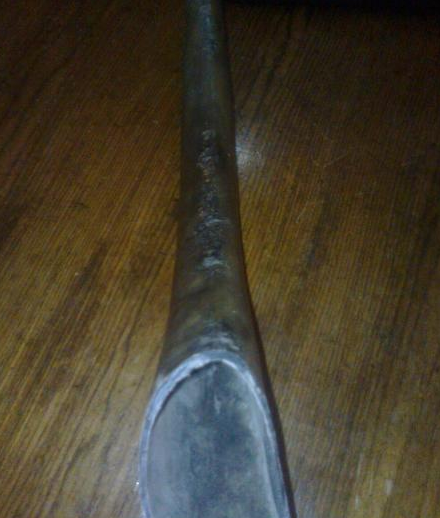
A third trader is peddling from another Egyptian site what he claims to be antique Rhino horn. On viewing such horn in great detail it appears more resin like rather than any real Rhino of which is clearly advertised. The site listed hereto is mmlkat-ala7jar.com has been under close observation by the CICU unit and EAD since 2012 of which is filled with many wildlife parts under the guise of “antique”.
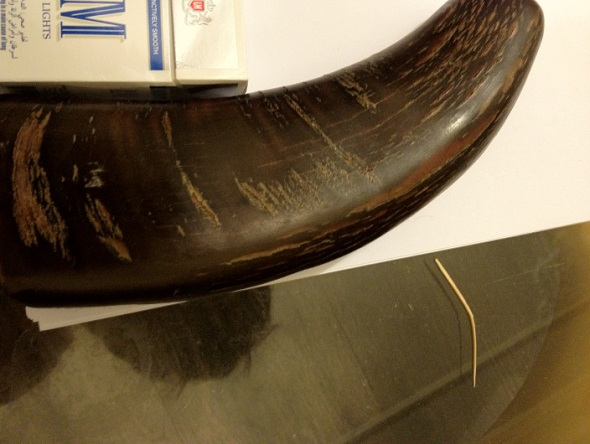
International Animal Rescue Foundation Africa printed recently on a rather suspect Rhino horn that was up for sale below. The horn, quite clearly is not antique as has been suggested within the article. The trader is still peddling even though Interpol Environmental Crimes Unit have been informed. Furthermore what is more concerning whom is supplying this individual from Africa with Rhino horn? This particular article is somewhat outdated however the CICU and EAD montier sites regularly of which they have passed on intelligence of conversation and potential sales of wildlife trade to the Interpol’s Environmental Crime Unit.
The trader that goes by the name of Razzer Q uploaded this one particular horn back in 2008. Intelligence has shown that this trader is also peddling in counterfeit horn and still trading from this site.
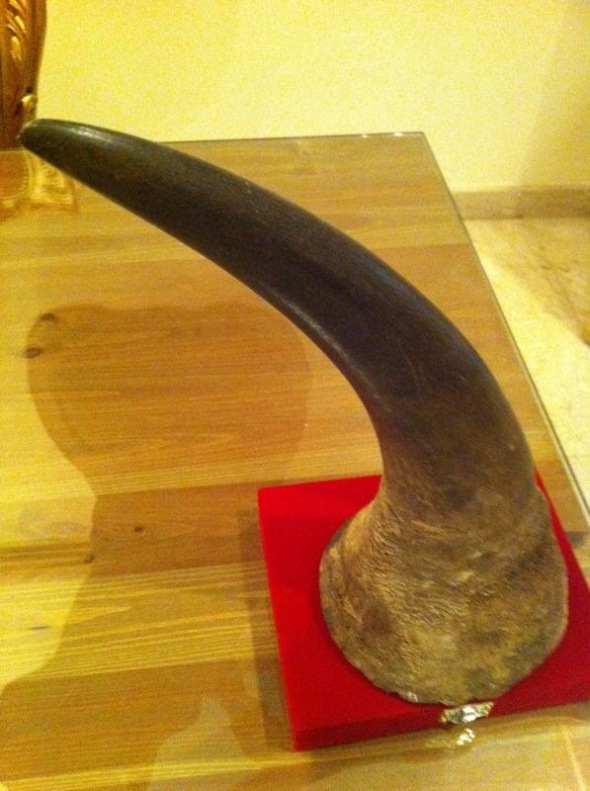
A fifth trader that quite clearly goes to the lengths of advertising all contact details, email, and cell number has been peddling again what appears to be “fake” Rhino horn from Egypt. We cannot state if this is real or counterfeit however evidence of such fake and real Rhino horn trade within northern Africa is growing by the month. Please click on the picture below for more information.
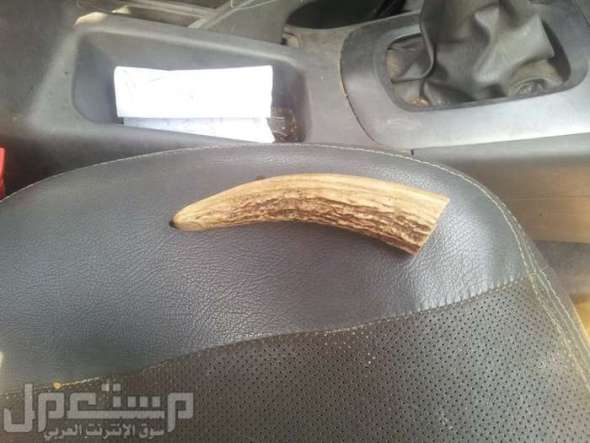
Just to give you an insight into how crude traders and scammers are online and on the ground, the picture listed below is from a trader advertising within the Ukraine what they state is their “own Rhino horn”. If one researches you’ll actually view what these scammers are selling are horns that were confiscated by wildlife and environmental investigative authorities. The scammer[s] have simply uploaded the pictures then created a site of which they are trying to fool potential buyers into believing they are actually purchasing illegally from legitimate traders. Click the picture for more information below.
 Fake Rhino horn trade is vast and spans the entire globe. Scammers also pose a significant risk to any potential legalised trade just as much as those that are peddling resin made Rhino horn. Conservation Investigations Crime Unit located a staggering 385 advertisements alone just within South Africa trying to scam purchasers with fake advertisements. Photography within these advertisements we can easily trace to pictures of seized Rhino horn.
Fake Rhino horn trade is vast and spans the entire globe. Scammers also pose a significant risk to any potential legalised trade just as much as those that are peddling resin made Rhino horn. Conservation Investigations Crime Unit located a staggering 385 advertisements alone just within South Africa trying to scam purchasers with fake advertisements. Photography within these advertisements we can easily trace to pictures of seized Rhino horn.
A RECENT study in Vietnam, sponsored by the World Wildlife Fund (WWF), reveals that demand for Rhino horn may be much larger than previously thought. It shows that, in addition to consumers of Rhino horn, there is a large group of “intenders” — people who intend to buy Rhino horn when they can afford it. The study shows that Rhino horn is bought not just for traditional medical purposes, but also as a status symbol. Rapid growth in living standards means the number of people who could become consumers of rhino horn is potentially enormous.
These findings cast doubt on the viability of proposals, supported by the South African government, to introduce a legalised, regulated market in Rhino horn. Supporters of such an approach believe a regulated market offers a better chance for the survival of the world’s remaining Rhinos than a ban on all trade. They argue that a ban on trade has perverse consequences — it raises the price of horn and so increases the incentive for poachers. By contrast, this view suggests that legal sales of stockpiled Rhino horns, plus the dehorning of live Rhinos to sell their horns, would drive down prices, reducing the incentive to poach. This is of course not proven and as much as one tries to argue this point with the pro trade lobbyists their main response is more in the line “we have to give it a try at least”.
Concluding we have many avenues that have still yet to be exhausted by the South African Government that may or may not preserve the Rhinoceros, either way that MUST be tried and tested. We have to exhaust all our options before leaping forward into a trade that could potentially cause more harm than good. Rhino poaching is increasing of which for this year alone to date (2014) we have lost some 192 Rhino of which the majority are slaughtered within the Kruger National Park.
Counterfeit Rhino horn trade regardless of what any pro trade lobbyists state poses a significant threat to the any legal trade. Should trade be legalised and with vast evidence of “counterfeit and illegal” trade still online and on the ground will the legitimate trade actually decrease counterfeit trade and scams? International Animal Rescue Foundation Africa believes not. For example those that are merely wanting to make a few hundred thousand of which do not use Rhino horn will still continue to sell imitation Rhino horn to individual users that wish to purchase at a decreased selling price, this “type of trade” or “undercutting” is no different to the sales in illegally imported tobacco and liquor . The South African government will have to tread very carefully now and ensure that should they be given the go ahead to trade from Cites then the price will have to be right with “controlled and professional trade” practiced at all times. Corruption must be addressed as to the hundreds of thousands of imitation sellers and scammers online and on the ground dealt with. Rhino pseudo hunting must also be banned too. Evidence is quite clear that hunters and farmers are in on the fake and real horn trade. Cites and the Department of Environmental Affairs are more than aware of this yet fail to acknowledge the seriousness of this problem.
Rhinoceros horn is not medicine and has never been proven to cure any form of medical ailment within humans. Very high concentrations were experimented on within rodents and of which only showed a very small decline in temperatures induced by scientists. The evidence is below of which clearly shows Rhino horn containing natural ingredients that are commonly located within the human hair and fingernails, horse hoof, tortoise shell, and parakeet beek.
I will be writing more on this article in due course of which I will be going into more detail of such imitation trade and trades not related to Rhino horn that have been exploited costing the globes governments billions in lost revenue every year. Imitation trade and unregulated trade is rarely documented on within the public domain of which needs to be.
What I myself find rather concerning as the Chief General Director is the ease that my team can locate illegally traded Rhino horn, Elephant ivory and Tiger skins online within countries that have supposedly tight online security. Yes the majority of my team are multi-bilingual speakers it doesn’t take a rocket scientist to locate illegal activities. Furthermore I wish to express my concerns at the lack of policing and intelligence sharing from one government/policing authority to another. Lastly, we have documented time again on the increasing wildlife trade within Northern Africa I.e Egypt of which not one single arrest has been made with regards to the peddling of Rhino horn and Elephant ivory.
Chief Director General
Environmentalism Chapter 30 - CoP 16 Report on Wildlife Crime
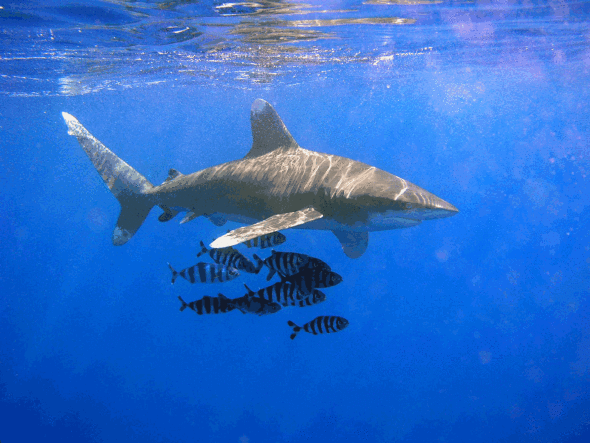
International Animal Rescue Foundation © is pleased with the overall majority of the meetings at the 16th conference of parties (CoP 16th) held in Bangkok, Thailand from the 4th March to the 14th March 2013, although a handful of critics state otherwise regarding Tiger, Elephants and Rhinoceros, Polar Bears and other species listed within the 34,000 species that are brought up within the meetings every three years.
We are though somewhat disappointed in other decisions of which Asia was seen to group mostly together with nations that deal in illegal ivory, Rhinoceros horn but mostly illegal weaponry taking most of the floor.
Convention on International Trade in Endangered Species of Wild Fauna and Flora), also known as the Washington Convention adopted in 1963 and then consequently signed March 3rd 1973 by the then 177 nations which some sceptics seem to be forgetting Cites are not law makers as such. Cites is simply a “signed agreement” that consisted of 177 parties or countries with the majority of them nations from the European Union with one new nation entering four days that now consists of 178 parties in total.
Cites and the IUCN’s aim is to ensure that international trade in specimens of wild animals and plants does not threaten the survival of the species in the wild, and it accords varying degrees of protection to more than 34,000 species of animals and plants.
In order to ensure that the General Agreement on Tariffs and Trade (GATT) was not violated, the Secretariat of GATT was consulted during the drafting process. The agreement has also as of the 40th anniversary implemented and founded new adoptions such as task forces M.I.S.T from which nations will now work on forming an international conservation rescue unit to combat illegal poaching, pseudo hunting, illegal wildlife trade in plants and animals to the preservation of our water ways, soil and natural environment.
Should a serious event of poaching or natural disaster happen placing species in critical danger of extinction or other then transnational agencies will reach out to help other continents in dealing within in a multitude of tasks of which will be effective we hope within the next forty days. Forwarding on from the 15th March 2013, new Deoxyribonucleic acid laboratories will be set in place and internationally recognised departments dispatched and organized to now hit poaching and wildlife crime harder than before, although this is going to take some time to establish we will await and view what the outcomes of M.I.S.T and how effective other orders implemented will come about.
Cites and the International Union for the Conservation of Nature DO NOT see “hunting as a crime” or major problem from which it clearly explains that “sustainable utilization” to protect species is a must as explained in part of their mission statement above to not threaten the survival of the species in the wild http://www.cfr.org/natural-resources-management/convention-international-trade-endangered-species-wild-fauna-flora-cites/p21750 http://www.iucn.org/about/union/commissions/cec/cec_how_we_work/
Sharks, Tiger, Elephants and Rhinoceros;
Much confusion is floating on the international networks that Cites has been caught with its pants down as is only thinking of monetary gain, this is complete utter nonsense. CITES is an international agreement to which States (countries) adhere voluntarily. States that have agreed to be bound by the Convention (‘joined’ CITES) are known as Parties. Although CITES is legally binding on the Parties – in other words they have to implement the Convention – it does not take the place of national laws. Rather it provides a framework to be respected by each Party, which has to adopt its own domestic legislation to ensure that CITES is implemented at the national level.”
In laymen’s terms each nation has to engage in protection of some 34,000 species from which they can ignore such as most of Asia has. However should the “signed parties” FAIL then sanctions can and will be placed of which evidence is shown by the nation’s effected to those that are want action or are concerned with crime in their continent.
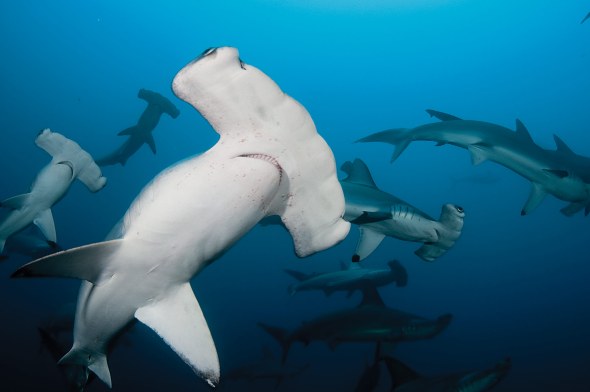
The states then voluntary agree by VOTING that sanctions will be implemented. By applying these sanctions this then BANS the aggressor nations from importing, or exporting any of the listed 34,000 species of plants and animals that would see the violating the nations revenue hit drastically.
Sharks
The 16th meetings of the Conference of Parties (CoP) finally after much debate and disapproval by Asia and some African nations, listed the Ceanic White-tip sharks, three species of Hammerhead Sharks, Scalloped Hammerhead, Great Hammerhead, and Smooth Hammerhead, Porbeagle sharks and manta rays. We are very pleased by this as some 100 million Sharks and Rays a year are slaughtered for their fins to produce Asian Shark Fin soup and Traditional Chinese Medicine.
Had this very historical move by all nations not of been implemented then the Sharks explained above would have been pushed to near extinction from over fishing, poaching, hunting, and the Traditional Chinese Medicine trade which in turn would also have seen a mass over population of their prey thus placing more small species of marine aquatic life in danger we would also of seen a colossal loss of such amazing species effecting marine biodiversity more.
Asia are the main number one offenders and should such nations NOT abide by the ruling that will come into place after the honey moon period of 40 days then sanctions could be placed at any alternative meetings plus17 Conference of Parties (CoP) thus seeing ALL trade banned.
Tiger
Although the Tiger species was not mentioned much about in the meetings it was actually spoken about on the just before the meetings of which Cites quoted the following;
Police and customs heads from 13 Asian countries agreed today to tighten controls and improve cross-border cooperation to curb the illegal smuggling of tigers and other critically endangered species. The accord came at the conclusion of the two-day international “Heads of Police and Customs Seminar on Tiger Crime”, which brought together top Police and Customs Officers from countries that still have tigers living in the wild.
Hosted by the International Consortium on Combating Wildlife Crime (ICCWC), and organised by INTERPOL, in cooperation with the United Nations Office on Drugs and Crime (UNODC) and the World Customs Organization (WCO), and with the technical and financial support from the Convention on International Trade in Endangered Species of Wild Fauna and Flora (CITES) Secretariat and the World Bank, the Tiger Seminar objective was for participants to agree on a robust set of law enforcement-based solutions to protect tigers and other rare and highly threatened species.
“The tale of the Tiger is not simply about conservation, it is also about crime,” said Mr. Yury Fedotov, UNODC Executive Director. “It concerns transnational organized crime, high profits, widespread corruption, money laundering, fraud, counterfeiting, and violence.”
The Tiger Seminar brought together 26 delegates from 13 tiger range countries as well as senior representatives from ICCWC members and key partner organisations operating in the field of tiger conservation and wildlife crime. A critical Tiger Seminar activity was to raise awareness among Police and Customs authorities of the impact wildlife trafficking has on wild tigers.
“We must take immediate and urgent action to save these magnificent animals from extinction,” said Mr. Kunio Mikuriya, WCO Secretary General. “The global Customs community is firmly committed to working closely with its partners to stop criminal trafficking in endangered species and other environment sensitive goods, by ensuring more vigilant and effective border enforcement among a range of measures.”
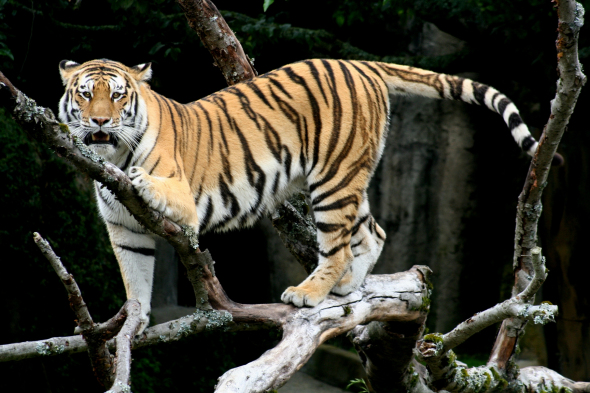
Environmental crime is a serious international problem with a detrimental impact on the global economy and security. Criminals violate national and international laws through increasingly sophisticated techniques and highly organised networks. Their activities directly affect human health, and threaten the environment and global biodiversity.
“Our efforts to fight tiger crime must not just result in seizures - they must result in prosecutions, convictions and strong penalties to stop the flow of contraband,” said Mr. John E. Scanlon, CITES Secretary-General. “If we get the enforcement system right for the tiger, we will help save countless other species together with their ecosystems.”
Tiger conservation experts presented an up-to-date situation analysis of wild tiger conservation threats, particularly worldwide and Asian trans-national organized crime links to wildlife crimes, including the trade in tigers and tiger parts.
“Wildlife and other environmental criminals too often operate in remote areas with impunity, evading detection, and circumventing full prosecution under the law,” said Mr. Keshav Varma, Program Director, World Bank Global Tiger Initiative. “The World Bank and Global Tiger Initiative fully support the resolve of the police and customs officials from tiger range countries to collaborate on intelligence. We applaud efforts to intensify pressure on the organizers of criminal networks and corrupt officials who shield them.”
Working with environmental crime experts, participating tiger-range country police and customs senior officials agreed on cross-border action points, opportunities and cooperation strategies, after discussing national priorities, challenges, and reviewing best practices.
“This important seminar has highlighted the environmental crime challenges facing senior law enforcement officers and the need for enhanced international cooperation.” said Mr. Jean-Michel Louboutin, INTERPOL Executive Director of Police Services. “Criminals cannot prosper from abusing our shared natural heritage.”
Tiger Seminar attendees discussed the need to develop a coordinated response to combat tiger crime.
“We need to work collectively through our respective environmental programmes,” said INTERPOL’s Mr. Jean-Michel Louboutin. “In this context, the INTERPOL Global Complex for Innovation in Singapore will from 2014 provide a key platform to fight environmental crimes in the 21st century.”
The Seminar also recognised INTERPOL’s Project Predator, which aims to develop the effectiveness of law enforcement agencies and form National Environmental Security Task Forces.
“If we lose an emblematic species like the Tiger, mankind will be acknowledging that it is prepared to lose any animal on the planet. This must not be allowed to happen.” said Mr. Yury Fedotov, Executive Director of UNODC. “By our actions, we must show that we have the capacity, the ability and the commitment to protect other species living on this planet.”
Compelled by the need to urgently respond to the burgeoning threat of environmental crime, five inter-governmental organisations formed in 2010 the International Consortium to Combat Wildlife Crime or ICCWC (read I-Quick). These organisations are: the Secretariat of the Convention on International Trade in Endangered Species of Wild Fauna and Flora (CITES), INTERPOL, the United Nations Office on Drugs and Crime (UNODC), the World Bank and the World Customs Organisation (WCO). The consortium seeks to scale up wildlife law enforcement effectiveness, by intelligence-led interdiction and advanced investigative methods.
The “Heads of Police and Customs Seminar on Tiger Crime” is one of the Consortium’s first activities. It is a follow-up to the November 2010 St. Petersburg Summit on Tiger Conservation, during which Heads of Governments of 13 tiger range countries committed to increase their cooperation to eradicate poaching, smuggling, and the illegal trade in tigers and tiger parts. Addressing illegal trade is an essential part of the Global Tiger Recovery Program, a comprehensive 12-year strategy endorsed by all 13 countries to double the population of wild tigers by 2022, the next Year of the Tiger.
The Seminar also addressed Decision 15.48 made at the 15th Meeting of the Conference of the Parties to the Convention on International Trade in Endangered Species of Wild Fauna and Flora (CITES) held in Doha in 2010, which states: “The Secretariat shall seek funds to convene, as soon as possible, a seminar involving senior-level Customs and police officers from tiger range States, to brief them on the threatened status of this species, particularly the impact wildlife crime has upon it. The officials shall also be briefed by the Secretariat regarding the Global Tiger Summit, planned under the Global Tiger Initiative, so that the law enforcement community throughout tiger range States is prepared to engage in efforts to safeguard this species and respond to measures adopted at the Summit. The Secretariat shall collaborate with ICPO-INTERPOL, the United Nations Office on Drugs and Crime and the World Customs Organization in preparing the seminar.”
Cites recognises that the PAOCHING crises is more of a challenge and by hitting this hard and also WARNING the offending nations that should they NOT cease or tackle poaching then by CoP 17sanctions will be placed and that will effect over twenty three nations. Cites and the signed nations have also agreed to input more Tigers into the wild, which would boost their number up by 3,000. Should the violating nations then not ACT sanctions could be placed on all nations.
Placing sanctions would be seen as catastrophic to those that deal in animal and plant part trade, many people rely on animals and plants that brings in on the “legal market millions” in revenue on the illegal market though the entire animal part trade is bringing in an estimated $25 million a year with the illegal plant trade taking in over $12 million. Think of it like a school child being given a warning “misbehave again and all your pocket money is removed”. However in order for all nations to agree on FIRMLY on this at the next meeting then the Tiger and other big cats need highlighting more.
With regards to Tiger bine wine it has been suggested in many reports and those reports from ourselves that most Tiger bine wine is now counterfeit, or is in fact a substitute. Other wildcats are being used for such non-medicinal liquors from the Lion to the Ocelot. The same applies to the Tiger balm and Rhinoceros horn of which 80% of Rhinoceros horn is indeed fake/imitation made up of fine resins and minerals.
Rhinoceros and Elephant;
The ivory trade is the commercial, often illegal trade in the ivory tusks of the hippopotamus, walrus, narwhal, mammoth, and most commonly, Asian and African elephants.
Ivory has been traded for hundreds of years by people in such regions as Greenland, Alaska, and Siberia. The trade, in more recent times, has led to endangerment of species, resulting in restrictions and bans.
While African elephants have been hunted for several centuries, the exploitation of elephant herds on a massive scale began in the 1970s. Organized gangs of poachers used automatic weapons, profited from government corruption, and laundered tons of elephant tusks through several African countries to destinations in Eastern and Western countries.
Threatened with extinction, the elephant is theoretically protected from international trade by their listing on Appendix I of the Convention on International Trade in Endangered Species of Wild Fauna and Flora (CITES) since 1989. The enforcement of this ban, the level of compliance adhered to by CITES Parties, the response of non-CITES members, as well as the policy question as to how trade “interventions” best serve the environmental objective of species preservation, are all key concerns of this dispute.
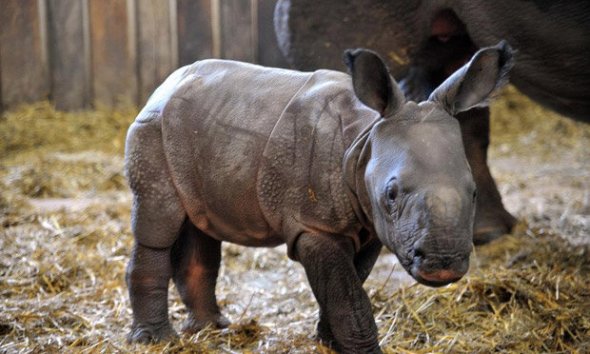
Both Asian (Elephant maximus) and African (Loxodonta africana) elephants are listed on Appendix I of CITES The Asian Elephant is now heavily endangered. Male Asian elephants have small tusks and Asian females are tuskless.
Remaining herds are located in small numbers in Nepal, India, Sri Lanka, Thailand and Sumatra and are now populated for 2012-13 at 22,000. The Asian species once was found throughout Southern Asia, was severely over-hunted. Although ivory trade has experienced sustained growth since the 1940s, the huge increase that occurred during the 1970s was the result of automatic weapons availability and widespread government corruption in many exporting countries which decimated elephant populations across Africa.
In the 1960s, raw ivory prices remained between $3 and $10 per pound. In 1975, the price reached $50 because ivory was perceived as a valuable hedge against rising inflation. By 1987, the price was $125 per pound. The relative price inelasticity of ivory also fuelled demand.
New manufacturing techniques which enabled the mass production of ivory carvings along with rising demand in East Asia led to increased elephant kills.
Hong Kong was the primary consumer of raw ivory from 1979 to 1987 and probably remains important today. Japan was the second largest consumer in this time (whose market share dropped markedly during the period), followed by Taiwan (whose share rose). For both Hong Kong and Taiwan, there is significant trans-shipment of product to China. In 1979 the EC began was a major consumer, but by 1987 its share dropped to 4 per cent. At the same time, the United States market share rose from 1 to 6 per cent
Cites quoted at CoP 15 the following;
“There has been increasing willingness within the Parties to allow for trade in products from well-managed populations. For instance, sales of the South African white rhino have generated revenues that helped pay for protection”. “Listing the species on Appendix I increased the price of rhino horn (which fuelled more poaching), but the species survived wherever there was adequate on-the-ground protection. Thus field protection may be the primary mechanism that saved the population, but it is likely that field protection would not have been increased without CITES protection”.
Trade in both Ivory and Rhinoceros horn is banned so there is not much now that Cites can do other than now order an ultimatum to the main twenty three nations that should the poaching not be ceased by the removal of ivory and tackling poachers, couriers, purchasers, kingpins to drug barons then Cites will as explained above impose immediate sanctions which would severely impact on the economy hard off the violating nations. However could placing sanction’s then increase poaching more?
This is the main worry that Cites has hence why they are cautions with regards to listing other Elephant and Rhinoceros species. So these offending nations are being given the chance, with the help of increased law enforcement, M.I.S.T and environmental policing agencies and “HELP of the Google to now remove all banned animal parts thus hitting demand harder and pushing the criminals into the streets which International Animal Rescue Foundation © required to now combat crime and cease all trade in three years. SHOULD it fail then sanctions will be implemented.
The conference has identified 23 countries including China, Nigeria and the Democratic Republic of Congo that are key to the supply and consumption of ivory.
A committee of the conference will outlined the actions that each of these countries must take to stem the trade. If these steps are not taken by the summer of 2014, sanctions could be applied.
It depends though on how much progress there is, but if there is absolutely no intent to follow up on those actions, sanctions are a very real possibility,” Targets for countries like Nigeria were achievable.
If you see ivory being sold at the airport terminals, all they need to do is shut it down. These are do-able actions, they are not ones that would require a great deal of new resources.
Governments were no longer seeing these species issues as being about biodiversity - they were seen as threats to national security. The criminals who are now poaching elephants and smuggling tiger parts are the same who are funding terrorism and funding militias.
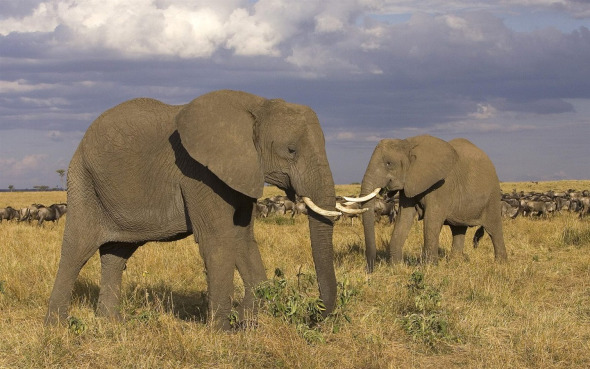
Hong Kong is already at the front line with colossal seizures from 2011-2013 http://www.scmp.com/news/hong-kong/article/1190036/hand-organised-crime-ivory-trade
Tourists are being urged now to STOP purchasing ivory from which International Animal Rescue Foundation © has seen much off and sent many papered documents to the environmental law enforcement agencies to now cease this, the press have launched now a multi-national appeal to STOP purchasing ivory this hitting trade even more http://www.asianewsnet.net/Thailand-tourists-urged-to-refrain-from-buying-ivo-43984.html
Please read following reports http://www.cites.org/eng/news/pr/2012/20120621_elephant_poaching_ivory_smuggling.php
Taiwan has stated it will also burn all ivory and ban all market trade before the next summit, Taiwan is the largest distributor and importer of ivory internationally with China and Vietnam being the second and third. http://www.bangkokpost.com/news/local/338598/thailand-in-landmark-pledge-to-end-its-ivory-trade all reports can be viewed here http://www.cites.org/eng/news/cuttings/2013.php
Rhinoceros is also under the same predicament and although there was not a mention of the trade being lifted at the Cites conference it has been seen by some “mostly Rhinoceros owners and some wildlife” agencies as unfair to allow the ivory trade to commence yet “not the Rhinoceros horn” however that is just blatantly ridiculous as on cannot de-tusk as Elephant of which all monies amassed from “sized Ivory” went into conservation protection “although that protection is to still to be seen” the sale never actually decreased poaching just made matters worse by supplying the market thus keeping the demand flow high and lucrative.
The Chinese government also then after purchasing the ivory re-sold this on for 10X the price they paid for it “that’s why poaching didn’t decrease”. The same in theory has been applied to the Rhinoceros from which the Department of Environmental Affairs quoted that the “the Rhinoceros horn debate will NOT “be lifted BUT has to spoke on as this a taboo area.
This clumsy researcher that was born in Africa that now resides in Australia printed this article on the Rhinoceros horn debate then instructed all of his friends and family, university students and more to not sign the AVVAZ petition https://www.facebook.com/photo.php?fbid=10150614157465933&set=a.10150167025165933.306936.633775932&type=1&theater then consequently contacted the DEA and other agencies to pressure the South African government on legalising it. Maybe he simply doesn’t understand a simple thing of what actually happened to the Elephant species. - http://www.abc.net.au/pm/content/2013/s3701680.htm
Most of the demand for rhino horn comes from China and Vietnam, where it is used to treat ailments ranging from headaches to cancer. The horn has no real curative powers, however–it is composed of keratin, the same material human fingernails are made of. Delegates to CoP16 in Bangkok, Thailand, congratulated the Department of Environmental Affairs for its initiatives to combat rhino poaching on the sidelines of the conference saying initiatives presently being undertaken in South Africa would enhance the global effort to fight all trans-boundary wildlife crimes.
The Department of Environmental Affairs then stated http://za.news.yahoo.com/south-africa-mulls-legal-rhino-horn-trade-123704593.html trade “has to spoke about of which SHE DID NOT state that the Rhinoceros trade WOULD be lifted. The DEA minster quoted;
“I must state categorically that there is no decision by South Africa on whether to apply to CITES at CoP17 to legalise the trade in rhino horn, or to permit the once-off sale of rhino horn stockpiles to fund conservation efforts, has been made.”
Edna Molewa 2013 March - Statement issued in the 8th March;
Update for Rhinoceros poaching 15th March 2013 is 158 Poached dead https://www.environment.gov.za/?q=content/stats_rhino_poaching_update
We were concerned about this statement though of which is going in favour of the hunting fraternity that see sustainable utilization as the only answer to control “species over population”. In our eyes there is no such thing as “animal species over population”. Our concepts are clear of which habitat destruction is the main number one issue that has to be tackled. The DEA minster quoted;
“South Africa’s position will be informed by, and based on, sustainable use principles with the long term conservation of species as the overall objective. Proposals that will ensure responsible utilization and conservation of the species concerned will be supported by South Africa”.
“Over 90 per cent of Africa’s white rhino and approximately 35% of Africa’s black rhino occur in South Africa. Rhino populations occur in formally proclaimed conservation areas as well as on private land, with the private sector contributing approximately 2.2 million hectares of land towards rhino conservation, with more than 4 000 rhino in private ownership. The populations occur throughout South Africa in all its provinces”.
“South Africa developed a Biodiversity Management Plan (BMP) for the Black rhino, aimed at ensuring the long-term survival in nature of the species, and is in the process of developing a BMP for white rhino. Key elements are the maintenance of existing ranges, the promotion of long term genetic viability and the establishment of new viable populations. South Africa shared information relating to the status of its rhino populations and interventions implemented and planned to secure its long term survival”.
South Africa has seen an increase in the illegal killing of its rhinoceros population, especially the white rhino population in the Kruger National Park where 425 animals have been poached for its horns in 2012.
While it is clear that rhino poaching has increased, so too has the focus and activities of the South African security forces in attempts to protect the rhino. South Africa has implemented various measures to counter the slaughtering of its rhino population, but 2012 saw the greatest number of rhinoceros killed in a single year, i.e. 668.
The side event at CITES CoP 16 was intended to show participants, attending the CoP, what South Africa has done in the fight against the illegal killing of rhino and illegal trade in rhino horn; and what additional measures are required to ensure the safety and security of our rhinoceros population.
The current annotation to the Appendix II listing of the white rhino populations of South Africa and Swaziland restricts trade to live specimens to appropriate and acceptable destinations and hunting trophies. A proposal to prohibit the export of hunting trophies until at least CoP 18 was submitted by a Party for consideration to the 16th CoP to CITES. This proposal was opposed by South Africa and Swaziland and it highlighted the need to have a discussion on the role of trade in the conservation of the species. During the side event presentations were made to elicit discussions relating to this important topic.
The Department of Environmental Affairs (DEA) is currently leading the development of the UNEP-GEF project ‘Strengthening Law Enforcement Capabilities to Combat Wildlife Crime for Conservation and Sustainable Use of Species in South Africa (target: Rhinoceros)’. The main aim of the GEF project is to improve the forensic and intelligence/information sharing capabilities of relevant groups to better control the recent upsurge in poaching of rhinoceros in South Africa’s protected area network, especially Kruger National Park. South Africa shared the information relating to the project with the CITES Parties and NGO community.
South Africa participated in the CITES and Livelihoods side event that reflected on the role international trade plays in terms of livelihoods of communities and the challenges and opportunities that it presents. The case study of the Tyhefu Traditional Council Aloe Project was presented by a community member of the project itself, Mr Mangwanandile Witness Mjoli.
Please read below the key components for your interest;
https://www.environment.gov.za/sites/default/files/docs/rhinopopulation_stateownedland.pdf
https://www.environment.gov.za/sites/default/files/docs/protection_ofrhino_species.pdf
https://www.environment.gov.za/sites/default/files/docs/unep_gef_project.pdf
One must not yet look at everything in all doom and gloom, the facts have been clearly stipulated and proven above, we must now all work as an international TEAM to combat illegal poaching, reduce demand, and protect our species of which transnational law enforcement forces are now undertaking. We must also remember that the Rhinoceros horn trade HAS NOT been lifted and the Rhinoceros is still listed as near threatened and not vulnerable.
Focusing on these key important areas thus using every piece of technology, equipment, funding, team work and more must NOW be seen as critically important for the next meeting at CoP 17 to be held in South Africa.
Thank you for reading
International Animal Rescue Foundation
Director
Co- Founders
International Delegates
Administrative Delegates
Youth Ambassadors China, Amazonia, America, Malaysia
http://www.grida.no/publications/rr/elephants/ (THE CRISIS CAN BE ADDRESSED)
There are 500,000 African Elephants left in the wild - Please download the most comprehensive and up to date research. Please watch the video above as it’s most important. There is also a 40Mb Pdf FILE that you can download. ELEPHANT range is now second to POACHING - Agriculture, supplying markets outside of Africa, land conversions from which South Africa ha now ceased all migrants from purchasing land so South Africa has known of this problem for some time. Habitual loss and human over population are KILLING the Elephants too. This now MUST be seen as MOST important that need’s tackling.. 60% decline is very worrying
RRAivory_draft7 Download Elephants in the Dust
25,000 left in the wild however hunting is declining in this with increased crime efforts to combat illegal trade and wildlife trade in vulnerable species.
Environmentalism Chapter 26 - Understanding Poaching
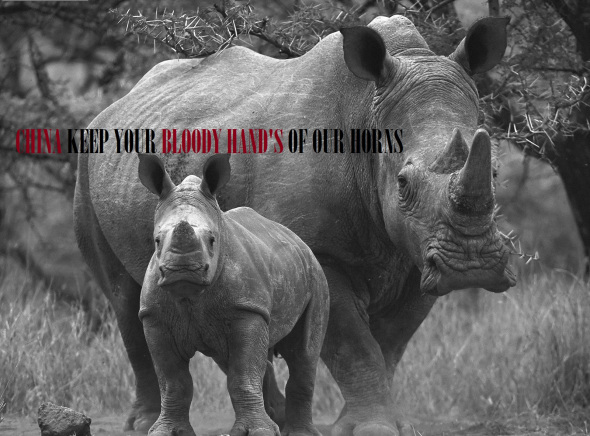
In this last document on understanding poaching part 5 I’m going to explain the other side the increasing demand for Rhinoceros and Elephant poaching and why demand is colossally raging out of control when in reality from recent surveys it has been proven that Rhinoceros horn and ivory to other animal parts are not actually being used to such a high degree anymore for medicine but rather consumption and religion/cultural beliefs or gaining what our once ancestors had within Asia.
Since January 2011 we have been monitoring other arrests that are related to Rhinoceros horn and ivory to try and ascertain other areas that we may have overlooked. These areas that we covered where in the regions of Hanoi and Saigon, and most districts of China, the two regions of Vietnam that I have identified is where most Rhinoceros horn is actually sold, however within China it’s sold all over as a whole.
The results were somewhat worrying that showed the levels of Rhinoceros horn in Vietnam are in fact very low, which confused us, based on the usage levels from 2012 surveys and how easy it is to actually obtain via classified advertisements, private marketers, to street vendors and the medicine markets.
Coming as no surprise the majority of Rhinoceros horn is actually fake, meaning that we have now [petty criminals] deep within Asia as well as highly sophisticated criminals working within Vietnam that is seen on whole as the largest user and consumer of Rhinoceros horn and second largest trader in Elephant ivory and other animals parts.
Records and arrest documentation within Asia have shown that 80% of Rhinoceros horn is non-Rhinoceros horn but chemicals that are made up of many different minerals, stones and Papier-mâché - French for “chewed paper”. The fake Rhinoceros horns were so delicately and intricately produced and then polished that buyers of Rhinoceros horn couldn’t even tell the difference between the real thing thus handing over thousands of Vietnamese dollars just for the [petty criminals] to then vanish leaving the [lucrative black market] trader some thousands of dollars out of pocket.
Rhino horn smugglers are now making very high quality fake horns, allowing unscrupulous hunters to sell the real horns at a huge mark-up to black market dealers for traditional medicine/and/consumption to status symbols. The fake horns are made with top quality resins and look so authentic that they are almost impossible to distinguish from the real thing, a report presented this week to members of the Convention on International Trade in Endangered Species quoted CITES officials have been alerted to the increasing involvement of professional hunters in the illegal rhino horn trade, this is yet another reason why international Animal Rescue Foundation © is working towards a full moratorium on hunting due to vast corruption and fake horn sales.
Trophies are exported to hunters after a legal hunt, but once the hunters have received the trophies in their home countries, the original rhino horns are removed from the trophies and replaced with fake horns. Our investigations teams have within the last four weeks located many traders that are selling trophies “on mounts” and off mounts of which it was clearly visible that the real horns had been removed, to even one trophy quoted as “recently hunted” [Northern White Rhinoceros] even though it had been pushed to extinction within the last decade, the so called antique’s horn was even placed pointing downwards and what looked like [glue] around the base of the horn [indicating that the real horn had been removed and a fake resin horn had been placed on the trophy.
CITES did not specify in which country the fake horns were being made and sold, but details in the report point to the possible involvement of either American or European hunters in the fake horn scam. As we ourselves quoted this “didn’t come as a surprise” as we know how many illegal yet fake narcotic sales are on the market, and with narcotics making gargantuan sums of money then the temptation to cash in on the (counterfeit trade) from petty yet skilled criminals is there and has been for some years.
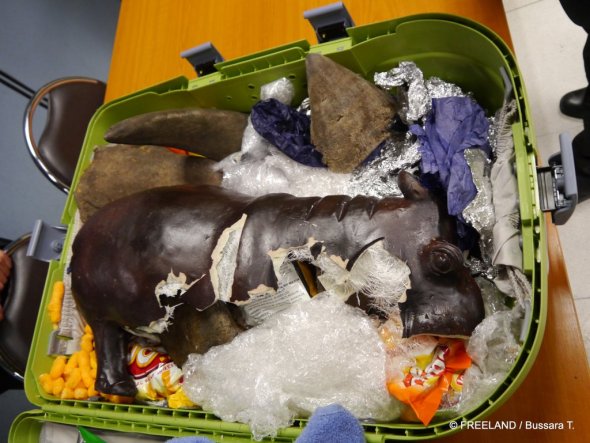
Horns are smuggled in via hiding them in statues to avoid detection.
In 2012 wildlife investigators in the US arrested several American and Vietnamese nationals in a major bust in several cities across the US following the seizure of numerous rhino horns, some of which were suspected to have originated from legal rhino hunts in SA and other parts of the continent being mainly Zimbabwe that has only 700 Rhinoceros left within the country alone.
There have also been a series of robberies from museums and private collections across Europe over the past three years in which the horns were stolen from mounted rhinoceros head trophies. The fake horns were initially made with a mould and were relatively easy to identify, but recent reports from authorities indicate that fake horns encountered lately are made in high-quality resin with a density even higher than that of a real horn.
This makes visual identification, once fully mounted, extremely difficult. But CITES officials have now found a way to smoke out the culprits (so they believe). Fake horns can however, be identified relatively easily by collecting and burning a small quantity of dust from the horn, which will deliver a distinctive smell indicating that it is not rhinoceros horn. Even though CITES have stated this, the unscrupulous buyer that is purchasing on the back street’s doesn’t always have the time to examine the horns leaving them out of pocket by thousands of Vietnamese dollars.
In the light of this new trend, it is of extreme importance that CITES parties should have adequate legislation and enforcement controls in place, to prevent horns that are part of legal exported trophies from being used for purposes other than hunting trophies, and to ensure that the trophies remain in possession of their owners.
Another possible source of the fake horns is Vietnam, which has been implicated as the end destination of dozens of SA rhinos that were shot legally by Vietnamese poachers posing as professional hunters. However the Department of Environmental Affairs in [2012] has now ceased this and Vietnamese hunters can no longer hunt or obtain a hunting permit for South Africa.
The report notes that Vietnamese authorities had pledged to conduct a stock-taking exercise to check whether SA rhino trophy horns were still in the possession of Vietnamese hunters. It is vital for the authorities in Vietnam to conclude this activity as a matter of urgency and to investigate fully all incidents where trophies are no longer in possession of the hunters. Such follow-up investigations can provide important information on the identity of the driving force behind the trafficking of rhino horn. People who no longer had their horn trophies should be able to tell investigators who the horns had be sold to. This has yet to be acted upon and we are led to believe that it will never be taken seriously too.
With all this evidence and knowledge though in the public domain and now known to the environmental law enforcement agencies the counterfeit trade is still on-going which in theory is driving the demand for obtaining the real horn up at increasing and alarming rates thus now threating the South African and African Rhinoceros species on a whole even more.
Saving Rhino’s the online non-profit organisation quoted;
The demand for rhino horn is so great in Vietnam that certain outlets are said to be selling imitation rhino horn made from cows or buffalo.
On the Vietnamese market, some sources report that a “freshly cut” rhino horn commands a retail price of USD $25,000 - $40,000 per kg. Imitation horns supposedly fetch a substantial price of USD $15,000 per kg.
Contrary to popular belief, the manufacture and sale of “fake” rhinoceros horns does not flood the market and drive prices down. Instead, imitation horns keep the trade invigorated and the demand high.
Regrettably as http://www.savingrhinos.org/vietnamese_rhino_horn_trade.html quoted and ourselves and CITES that until the demand is hit in every possible direction including the fake/imitation trade then we are going to view more Rhinoceros murdered for fake horn. It should also be noted that the Rhinoceros horn trade should never be lifted until all these avenues have been researched into more, investigated then illuminated and closed down that could cease the demand colossally.
Fact stands though that 80% of Rhinoceros horn is indeed imitation horn or other animal horns of which again we have been monitoring very large hunting organisations and outfitters that are hunting for demand vast populations of horned African species from the Oryx, Antelope, Impala, Kudu and Springbok of which the skilled petty criminals in Asia, America or Europe then delicately craft these horns with other materials in to a fake Rhinoceros horn. Such sales of horned animal products are on sale everywhere. http://www.africancraftsmarket.com/carved-horns.html
The problems don’t just stop at Rhinoceros horn nether the demand for fake ivory from which the “processed ivory can sell in the region of $25,000 to $100,000” depending on design is also on the rise and at worrying levels.
Other animal tusks such as Hippo ivory or Walrus and even bones are all being traded off too as Elephant ivory which again is increasing demand thus keeping the barbaric and senseless poaching continuing on such a large scale that saw in 2011 some 25,000 Elephants slaughtered for greed and culture, 2013 has seen almost 200 Elephants slaughtered for their tooth’s [tusks] for the entire continent of Africa.
Examples of synthetic Elephant ivory can be seen when the bottom of the tusk appears to be sliced, but no grains or ivory identifications are clearly visible. The “cut” area of the imitation tusk is created when the item is removed from the mould. There will also be small holes from bubbles made in the moulding process similar to that of plaster or plastics.
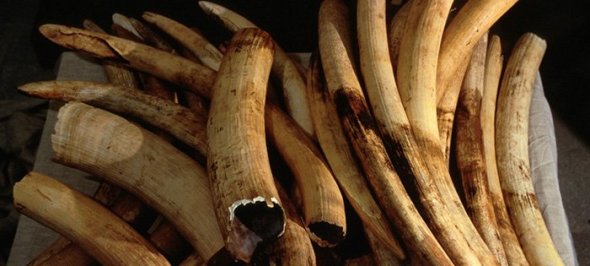
Wildlife internet crime is on the rise if we know your selling on the internet you will be located, and your details logged and you will face a hefty prison sentence or fine - this trader in India caught our eye last week one of many.
Sadly though there are many skilled craftsmen within Asia that have worked in the legal and illegal ivory trade for some years before ivory trade was eventually banned in the 1990’s. To become a skilled carver too you have to pass a five year course which coincidentally is run and funded by the Chinese government. These craftsmen are so highly trained that sourcing the real Elephant ivory from the counterfeit is near impossible unless a DNA sample is carried out.
Substitutes supposedly do not have the integrity of true ivory, and part of this has to do the growth pattern of ivory, called Schreger lines, which facilitates carving at any angle. So it seems the uniqueness of the material as a carving substrate, its beauty and its historic significance in terms of a rarity and prestige all contribute to the demand.
Even flooding the market with fake ivory would not help to reduce pressure on living elephants. The prestige and appearance of the real article make consumers demand genuine ivory in exactly the same way as Rhinoceros horn trade.
Many buyers of fake ivory and Rhinoceros horn will perform checks on the articles such as burning small sections to identify if the ivory is counterfeit however this is not always the case when the purchaser is presented with a $50,000 piece of crafted ivory or Rhinoceros horn at $75,000kg.
Would you as an illegal peddler allow someone to take a lighter or blow torch to the product and then [possibly damage the product] ruining months if not years of crafted ivory to damaging a Rhinoceros horn that [could indeed be real] you could be landed a hefty [illegal bill or even shot dead].
So how do we tackle the problem and what other areas can be looked into to tackle increasing sales to decrease demand?
- Firstly we could ask CITES and governing environmental agencies to now work towards implementing a full ban on all Asian hunting permits being obtained thus decreasing ivory trophies then being sold on the black market. Fact stands that in China some 90% of all ivory is illegal and has no papers as quoted by two independent investigative environmental agencies and the National Geographic Channel. Only 10% of the ivory in China is legal. [That’s incredibly shocking and worrying]
- Secondly we could ask CITES and governing environmental agencies to work on implementing a full ban on all Rhinoceros and Elephant hunting to reduce the market even more. This would also decrease the potential for any mounted trophies traveling into Vietnam illegally from other nations thus reducing demand on a whole.
- Online sales need to be tackled and by doing this I.S.P [Internet Service Providers] need to enforce now tougher regulations such as banning Internet Protocols from their sites thus cutting the trader and/or criminal of from the internet. Environmental agencies must share this information with other ISP providers so if the criminal/trader then located another ISP they would be immediately banned as the IP address being that “your personal computers number” would not be able to locate the internet based on shared intelligence. The same ruling must more or less apply to all E-mail providing companies of which should they notice the same IP logging on based on shared intelligence then the email provider does not provide thus communicating with wildlife and law enforcement agencies of which the individual can be monitored by all means of online trading.
- When traders are located selling and buying on the internet law enforcement agencies must introduce tougher penalties to now ban the trader from using any form of internet communication device, computer, laptop, internet café, mobile phone, proxy servers. A confiscation order must also be introduced of all communication equipment of which is then subsequently crushed if illegal online activity is noticed.
- Online classifieds must now be given a three count rule then banned we have located now many American, African, Canadian, European, and Asian buy and sell sites that are still not checking the sites accordingly for illegal wildlife trade. By enforcing such measures of which should they flout three times then the sites are automatically shut down or censored.
Since Operation Trojan Horse began [2011] part of the International Animal Rescue Foundation’s © environmental counter intelligence ground and monitoring research team exactly 175 Asian, American and European sites have been noted with 69 off them sites communicated with thus informing them of the environmental laws both on line and on the ground.
34 of them sites where shut down from the 175 located and eavesdropped on with the remaining still under investigation of which we are communicating with law enforcement agencies exactly what they are providing, advertising, to the whom the buyers are and what other web of communications the buyer[s] have such as the black market, couriers, poachers, social media and other.
These options must be seen as the only option in reducing demand further before implementing a legal trade in Rhinoceros horn or ivory, and as an environmental investigations and animal welfare unit that’s provided factual evidence, surveyed evidence and statistics to, high crime rate, low unemployment, and high poaching then demanding a full moratorium we cannot yet agree on fully as experienced and knowledgeable environmentalists until every possible avenue has been effected. The reasons for not “as yet” fighting for a full moratorium I have highlighted below. Please take in to account that we state “full and not partial” for the reasons highlighted below;
- Would the consequences of a complete ban on hunting then impact on job losses and liquidation of companies thus increasing anti-social behaviour, crime, increased poaching, and poverty, suicide, to effecting child and adult education?
- The demographics of South Africa encompass about 50 million people of diverse origins, cultures, languages, and religions, this is based on the last census of [2011] with the next census not due until the years between 2016-2021. Every minute within South African alone there are 10 children born every minute thus increasing populations which has a detrimental effect on natural habitat pushing more species out of their natural living areas. By implementing a complete moratorium would this then have a knock on effect on species that are so tightly packed within areas they have been pushed into via habitual destruction that agriculture and homeland would be consequently invaded to even placing human life at risk and destroying crop?
- By placing a moratorium on hunting for the species of Rhinoceros and Elephant in South Africa would this increase poaching of other species thus introducing another trend to the black market thus starting a new destructive circle of?
- Would a full hunting ban increase what we are seeing now botanical poaching thus reducing near threatened endangered and criticality endangered species of plant and trees that human and animal life depends on?
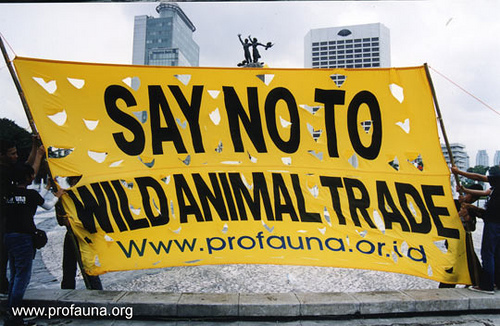
As professional conservationists we cannot take any chances or risks of placing a nation in even more poverty, damaging conservation and agriculture more too increasing crime and possibly a
newer poaching trend. Surveys have to be undertaken, risk analysis, environmental monitoring, and what other methods can be introduced to decrease the illegal black market of wildlife trade.
The department of Environmental Affairs issued a ban on all hunting permits to Vietnamese individuals applying for a hunting permit in 2012 of which the D.E.A quoted in their last government public announcement 1st March 2013 that hunting permits that have been applied for in 2012 had decreased significantly by almost 50%.
This may sound fair and good news, however this ban was aimed more at banning pseudo hunting from one nation based on the number of corrupt individuals that haven’t even fired a rifle never mind hunting in [Vietnam] from entering in to South Africa.
Most of the non-genuine hunters were not keeping the trophies as stated in environmental law then removing horns as explained above thus subsequently selling the real horn on. The trophy they had in their possession had then either coincidentally vanished or the horns had been replaced by imitation horns made from fine resins and/or resin and papier-mâché.
However the poaching has still erratically increased and banning [just] Vietnamese individuals has not had any effect at all from the ever increasing demand of illegal wildlife trade that’s flooding both Thailand and Vietnam at alarmingly high levels. http://www.capitalfm.co.ke/news/2012/05/mozambique-customs-arrest-vietnamese-rhino-horn-smuggler/ http://english.vietnamnet.vn/fms/society/56937/the-biggest-ivory-rhino-horn-smuggling-cases-in-vietnam.html http://www.rhinoconservation.org/2013/01/07/rhino-horn-smugglers-arrested-in-thailand-and-vietnam/
We was not expecting the D.E.A (Department of Environmental Affairs) to just ban Vietnamese citizens as what’s to stop a Vietnamese posing as a Chinese or Japanese citizen with fake papers, also what’s stopping them from obtaining fake passports and papers that can and are made to order and online or via black market tourism trade that helps illegal asylum seekers to enter nations using political persecution as a weapon for refugee to then carry commit crime and terrorism.
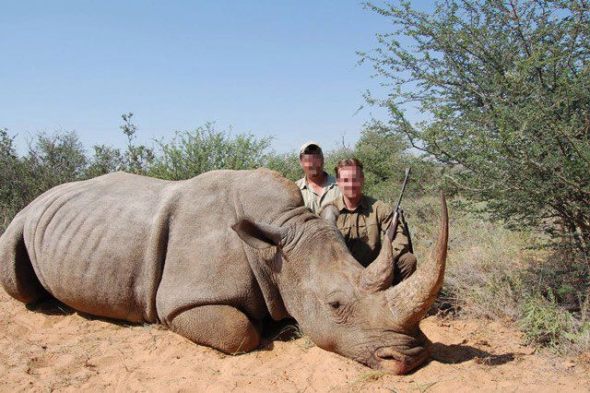
Since the DEA banned hunting Vietnam citizens from applying for hunting permits there has been a substantial increase in the amount of American, Russian and Eastern European hunters now applying which is believed to be the increase of more Rhinoceros pseudo hunting to supply the demand for Rhinoceros horn in Asia.
Since the permit ban was placed evidence suggests that nationals from the Czech Republic and Poland have been implicated in pseudo-hunts. Information from the DEA in South Africa indicates that there has been a 50% plus reduction in the number of rhino trophy hunting permits granted and that the number of hunting applications from Vietnam and other East Asian countries has dropped off as explained above. However, there has been a reported rise in applications from Russian and, particularly, US hunters (up by 300% in 2012 so far compared to 2010) possibly indicating the flexibility and opportunistic nature of pseudo-hunting criminal operatives.
From 2003 to 2013 those that have been arrested for Rhinoceros poaching alone have been more Afrikaans indicating that syndicates could possibly be working within the refugee camps in Africa posing as refugees then sending the poor man into South Africa from Mozambique.
The total number of Mozambique’s that have been arrested is now standing at 479 from 2003 -2012 of which they are the most known poachers, and with the evidence above within the links it clearly shows that Vietnamese are working inside Mozambique which now needs addressing immediately. The poacher then supplies the Vietnamese or Thai couriers which consequently keep the demand flowing, although it’s been disrupted slightly.
From research we have amassed the following;
- The ban on Vietnamese hunting permits has been a complete waste of time with more poaching increasing via African individuals via Mozambique thus supplying the market more. This could also suggest that should there be a lift of the Rhinoceros horn trade with [controlled prices and trade] then reflection from the hunting permit ban on Vietnamese could increase poaching could as a whole considerably more.
- Pseudo hunting from US, Russian, Polish, and Czech Republic individuals has increased which if not monitored or some form of control implemented could see the Rhinoceros population’s desolated.
- 80% of imitation horn is deriving from Europe and America of which is then flooded into Vietnam of which when the buyers and users become aware of the horn being fake this then increases demand more via poaching. Keeping the imitation horn demand flowing too is also increasing the real horn demand both with ivory and Rhinoceros horn.
- Antique dealers are now cashing in on the horn and again supplying this to the market.
- Internet trade has to be tackled more where more horn in larger sums is being peddled on classifieds, buy and sell, to private sites using code words, acronym’s and other.
- There must be international environmental police established in each of the 178 nations that are listed with The Convention on International Trade in Endangered Species of Wild Fauna and Flora.
- Peddlers in the imitation horn trade need to be sought and consequently arrested, the chemicals they are using sought and then listed in the same way as agricultural fertilisers and other materials so that should a producer order these chemicals in large quantities law enforcement are then informed which in turn can track those responsible.
- The sales of other trophy horned animals has increased since the ban on Vietnamese hunting permits was introduced.
- Refugee camps and customs need to be looked in, monitored, and investigated.
The sales of imitation and fake Rhinoceros horn’s needs to be taken seriously as whilst this is still in the woodwork it’s creating more demand of which needs nipping in the bud hard with the traders dealt with in the exact same manners as those peddling in the real horn and wildlife trade.
- In October City Press reported on a man near Musina, Limpopo, who carved fake rhino horns and boasted that he could sell them for between R15 000 and R25 000 each.
- March the 2nd 2012 in Johannesburg another seizure of fake horn was seized that appeared to be have blood on it the accident on the N3 near Johannesburg saw two men arrested then subsequently let off.
- A lot of dealers know they are dealing with fake horn products and as such consider themselves to be ‘legal’. [It’s actually illegal under CITES law to be selling fake or real horn in Vietnam however it is in operation on a high level].
- Legal sales of fake horns and skulls are being purchased in the United States, Europe, and Asia that now needs monitoring and action placed.
Just to give you an insight as how nervous people are with regards the trade in Rhinoceros horn in Vietnam being fake, we searched other dealers and located information from dealers below which is a “guide to check if the horn is real or fake” which again points to the theory that 80% of Rhinoceros horn is indeed imitation and driving demand more. The site checked also gives a bigger insight on the horn trade in Asia as a whole which is worrying”
The dealer quotes;
“A wide range of verification methods are offered when questioning the authenticity of horn material. From the density of the material when cutting with an iron saw, to the colour of the ‘milky’ solution when powder is mixed with water or rice wine, shining a sharp torch through part of the horn, burning a corner and sucking in a hairy smell, tapping the horn piece with a finger nail and analysing the sound, pulling off some individual fibres (it seems one of the most reliable ways to try to identify real horn”.
The dealer then goes on to quote;
“Most of the horn on offer tends to be cut slabs or the tips indicating that it mostly comes from polished and modified water buffalo horns”.
“When asked for the easier to identify base of the horn the dealers tell the stories of it being the most valuable part and always sold first and them only having the tips left”.
“Prices quoted at the wholesale level to buy a whole or a large chunk of a horn, based on weight, were pretty uniform at U$ 20 000 for African horn and U$ 40 000 for Asian horn per kg (they being much smaller than the African horns). It was clear that with imitation products more flexibility existed in negotiations (in one case a piece of horn was cut from the bigger part with a chisel and hammer and pieces flying all over shop”.
“TCM dealers do trade in small quantities and it then it becomes retail and the prices go up (we also bought a sample in commercial packaging in Chinatown in Jakarta which officially stated it being 0.3 grams contained in a small glass vile”.
“Besides this retail trade for medicine there is the market of the big players buying whole horns and having special trusted dealers doing the verification for them. These players include the nouveau rich with a Rolls Royce in the car park who buy it as a must have item, as a status symbol and possibly also looking at it as an investment opportunity with supply bound to get more restricted and respective prices going up. On several occasions we were told of a family patriarch buying up a whole horn and then taking care of the family’s need and handing out pieces and powder as needed”.
The dealer then quotes the most worrying evidence;
“A dealer in the north of North Vietnam told us that a drug enforcement unit recently visited him and took some of his horn telling him that he would be paid later, indicating corruption in law enforcement on all levels”.
“The grinding plates have now also gone “up market”, with a new version made out of special Japanese clay which was introduced recently. The pamphlet which comes with the very fancy packaging also includes images of a live rhino and promises that horn can ‘cure incurable diseases”.
“The latest step being the sale of a special contraption supposedly with Japanese motor that can be bought to grind down the horn into powder. The above plate is mounted on a rotating platform and the horn piece is then fixed above the plate into a vice type metal grip and lowered to the rough plate surface and then the machine is turned on, the horn base is stationary on the rough surface and the plate turns. So a whole industry producing accessory items is now evolving”.
“In the case of the Asian rhino horns on offer, the fakes are much more realistic since the base is generally part of the very small horns but there are also obvious fakes”.
WORRYING TRENDS AND RELATIONS TO THE UNITED STATES;
The main import dealers are well established businessmen involved in all kinds of related activities including the trading in other contraband (in one case said reputed to be amphetamines). In the case of a key Laotian importer he hands out a business card showing that he is the head of the chamber of commerce for his district and the deputy head of the Laotian boxing and swimming association. He also operates a macaque breeding farm with primates being sold as captive bred when many are indeed wild caught imports from Thailand and Cambodia - with most of them being exported to the US for medical research. He is also about to expand his tiger farm.
“Dealers on this level often hire ‘mules’, just like with the drug trade, to get the merchandize to their headquarters. If anything should go wrong at the international level they can disassociate themselves from any such transaction and they deal with the product once it is in the country and then they do not have to worry about any potential problems occurring along the borders”.
The dealer then quoted the most worrying news that was very shocking;
“However even on the international level there seems little to worry about. I recently bought an imitation horn from a US store which produces Bone Clones of all kinds of skulls, human and animal bones including museum quality skeletons. I transported the well done imitation product openly in my check in bag over half a dozen international borders expecting somebody to detect the shape and form on an X-ray machine and questioning me. It never happened”.
We must not under any circumstances lift the Rhinoceros horn trade until all of these most crucial avenues are explored and vaporised. Should the trade be lifted and even more Rhinoceros are murdered because of the trade both on the internet and via imitation horn to selling imitation horns and skulls worldwide then we could lose the Rhinoceros species more quicker than imagined with the Elephant unfortunately following soon after.
Should one not “understand poaching” and the “increasing demand” to “wiping demand of the plate” then regrettably we will lose this war thus placing other species in danger that will in turn keep the momentum of the destructive wildlife medicine and consumption trade flowing.
Dr J C Dimetri
V.M.D, B.E.S, Ma, PhD, MEnvSc
Director and Founder
Join us at Team Africa International Animal Rescue Foundation
www.international-animalrescue-foundation.org.uk
Founded 2010-2011
For more information on how you can help please email us at
To report illegal wildlife crime, poaching, trafficking, large domestic animal abuse please email below or INTERPOL
The video below just shows the amount of disrespect that Thailand has even when the meeting for the CoP summit is under way. Whilst the meeting was being held this undercover investigation was filmed showing the illegal trade in ivory. Allowing the Rhinoceros horn trade to be made legal will have disastrous consequences, and be shown similar to this. Rhinoceros horn is not medicine.
The Egyptian lather below clearly has no worries about selling ivory, we also located more ivory tusks on his website owned by an American domain WEEBLY
This site can be located here http://elwahe.weebly.com/index.html
VIETNAM PLEASE WATCH THE VIDEO - RHINOCEROS HORN IS NOT MEDICINE
This site is monitored and enforced by anti spamming technology, by spamming your comments are automatically listed and then deleted without being shown on the site. This organisation doesn’t tolerate spam or spam bots. Please read the above before wasting your time.
Thank you




